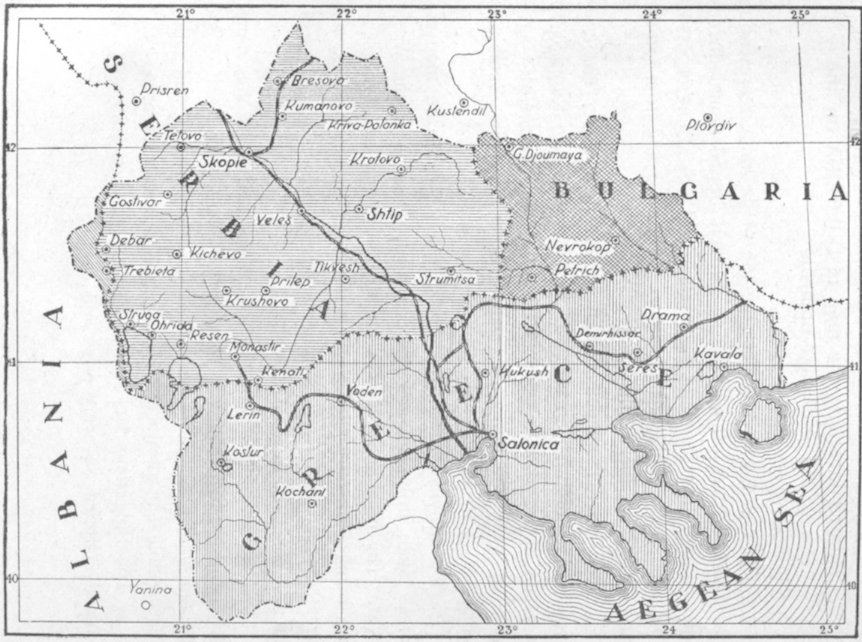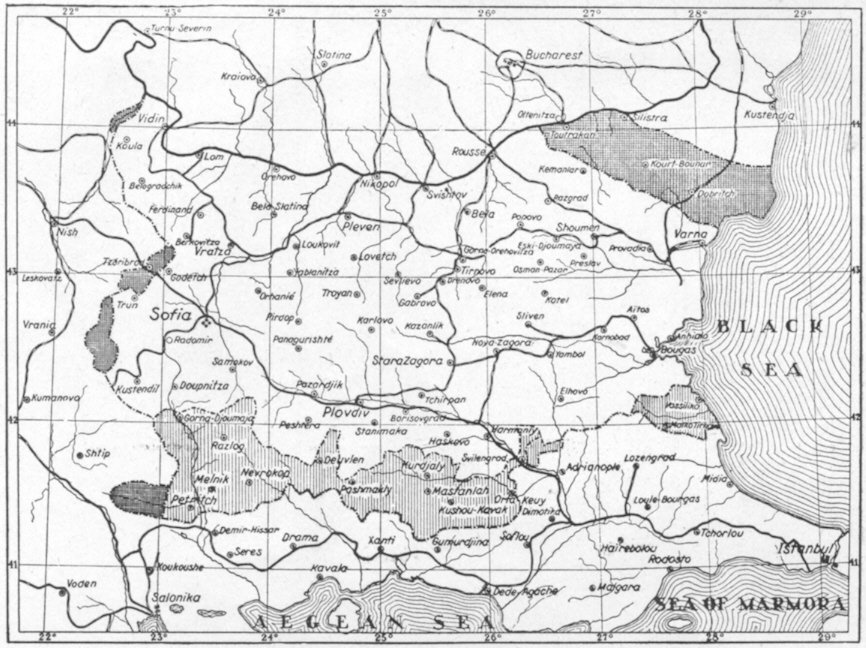
MAPS
Notes concerning the map of MACEDONIA on the opposite page
According to a book which has just come off the press under the title of "La Macédoine Économique", which is published by The Scientific Macedonian Institute and written by D. Yaranoff, the territory of Macedonia covers 26,000 square miles, of which 13,290 are in Greece, 10,000 in Jugoslavia and 2,710 in Bulgaria. In other words, as a result of the World War and Balkan wars, approximately 51% of Macedonia went to Greece, 39°/o to Serbia or Jugoslavia and 10% to Bulgaria. These figures should replace the estimates found on page 73 of this book, for it would appear that those include areas won by Greece and Serbia during the wars but lying beyond the strict limits of Macedonia.
Mr. Yaranoff states that in the whole of Macedonia there are two and a half million inhabitants. Practically all Bulgarians consider the majority of these people Bulgarians or Bulgaro-Macedonians. However, only 186,000 live in the territory included in Bulgaria, while the rest are in the states of Greece and Jugoslavia. It is this fact which provokes the Macedonian problem, the acutest international question in the Balkans. The Union of Macedonian Brotherhoods and the Macedonian Revolutionary Organization maintain a very vigorous Macedonian movement the purpose of which is by legal or illegal means to put an end to the present partition of their country and turn it into an autonomous province or independent state.

Notes concerning the map of BULGARIA on the page opposite
The heavy dark line near the top of the map, representing the Danube River forms Bulgaria's northern boundary and divides that country from Rumania. The rather faint broken line separates Bulgaria from Serbia or Jugoslavia on the west and from Greece and Turkey on the south.
The heavily shaded district in the right upper corner is Southern Dobroudja, an area which Bulgaria lost to Rumania as a result of the Balkan wars and World War. It is a rich agricultural land and the whole nation bitterly resents Rumania's conquest of it. This is the Dobroudjan problem.
The heavily shaded spots on the left end of the map are areas taken from Bulgaria by Serbia as a result of the World War. The inhabitants of these districts — Bulgarians of course — are being Serbized; the loss of this land and population has greatly added to Bulgaria's bitterness toward Serbia and constitutes a constant cause of ill-will.
The lightly shaded strip on the lower part of the map represents the territory Bulgaria won from Turkey as a result of the Balkan wars. It is for the most part mountainous and rather inaccessible and produces but. little wealth except tobacco.
The Bulgarians feel that their map has been ruthlessly and unjustly clipped on every edge and corner.
